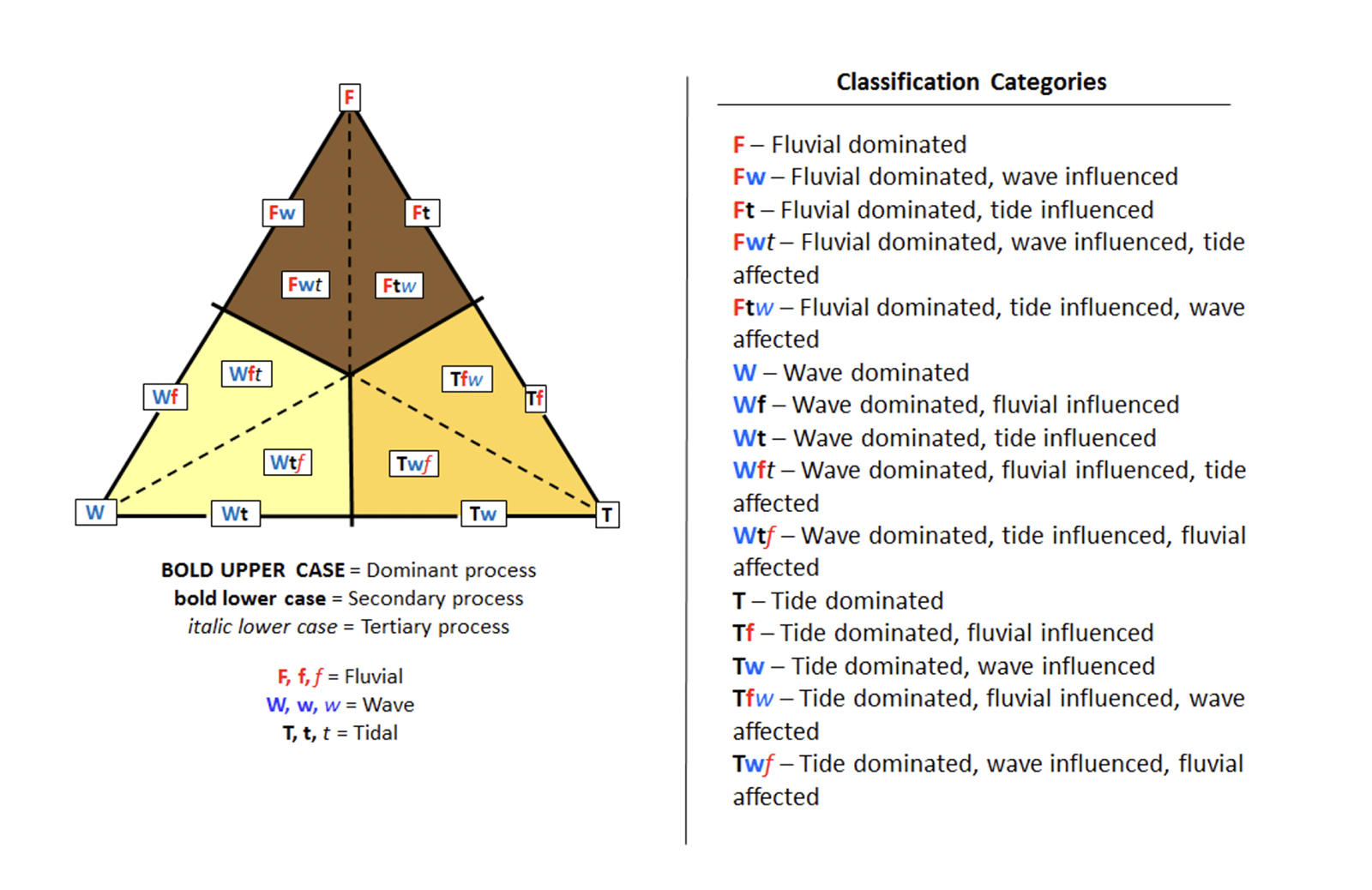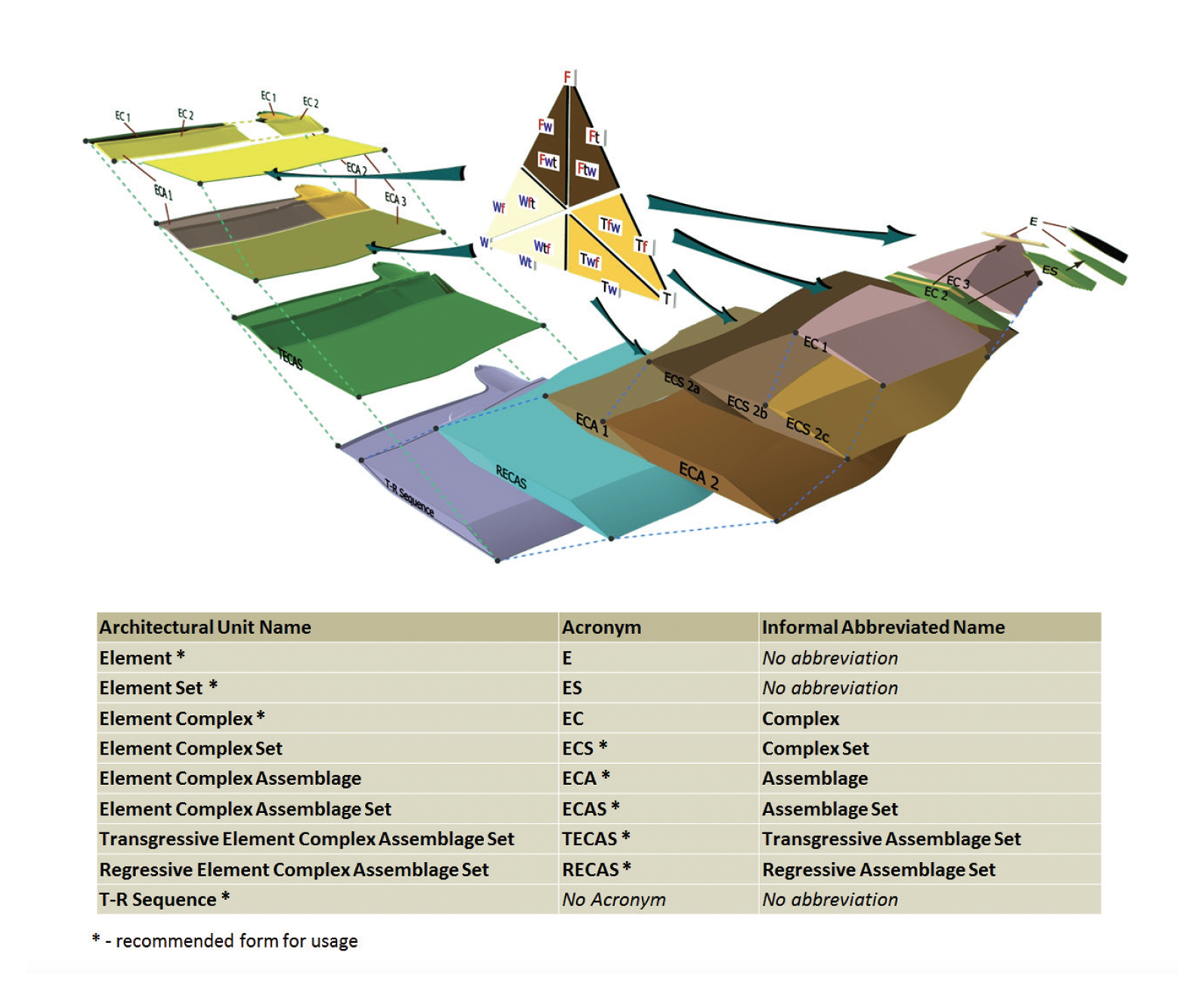Sedbase process categories
Stratigraphic architecture of shallow marine and associated channelized environments is strongly affected by the processes that affected sedimentation during deposition.
We use fifteen distinct categories that describe the presence and relative importance of fluvial, wave, and tide processes within a given architectural unit.
The processes are listed in the figure below. They are described by a one-, two-, or three-letter code depending on how many processes operate at the same time in a system:
-
Single-letter categories are affected by a single process.
-
Two-letter categories are affected by two processes with the first one being the dominant one.
-
Three-letter categories are affected by three processes with the order determining their order of importance.

The link between process and depositional architecture level
Depositional processes can be associated with different levels of stratigraphic architecture. A wave-dominated, fluvial-influenced (Wf) process, for example, can refer to a regional shoreline depositional system (ECA) or a local deposit penetrated at a single well (EC). It is important that we keep track of the depositional level when thinking about depositional processes to avoid confusion. See the Sedbase architectural categories page for descriptions of architectural unit categories.
Processes should not be applied at all depositional levels. We do not directly associate low-level architectural units (T–R Sequences, RECAS, TECAS) with specific depositional processes, as these larger-scale units may exhibit significant internal process variability. Instead, process interpretations are applied through their child units (e.g., ECA).

Process interpretations become important at intra-parasequence scales, where they help describe the character of different levels of architectural units such as depositional systems (ECA), delta lobes (ECS), local environments (EC), and architectures forming within local environments (ES, E).